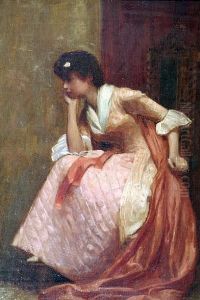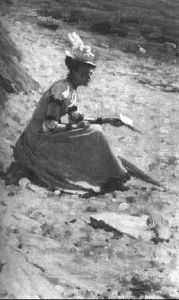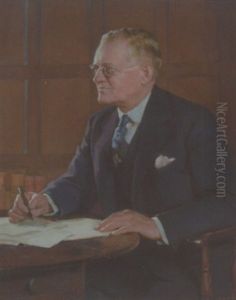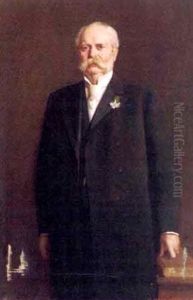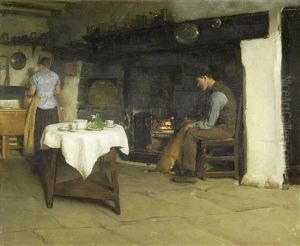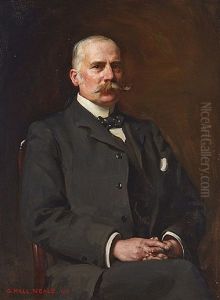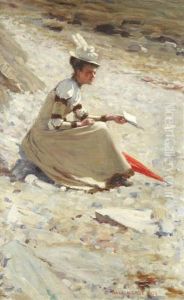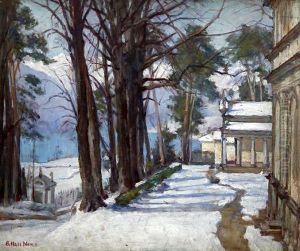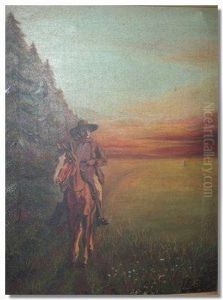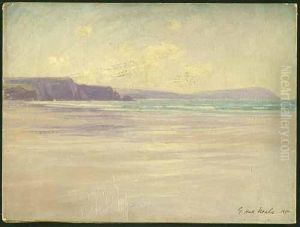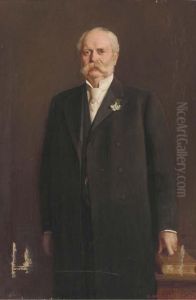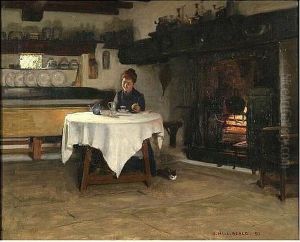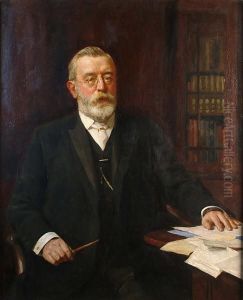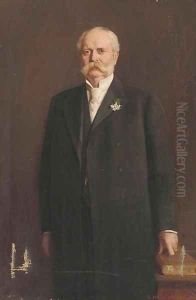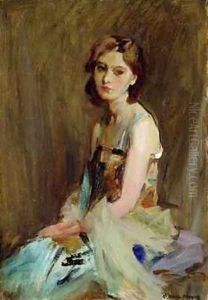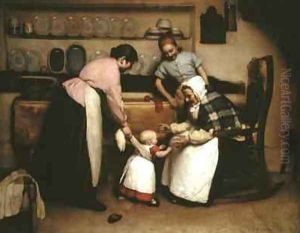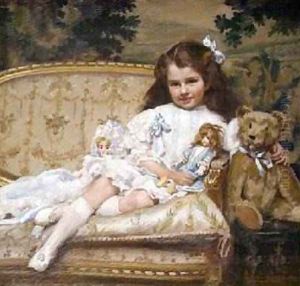George Hall Neale Paintings
George Hall Neale was an English artist known for his paintings, whose life spanned from the late 19th century into the early 20th century. Born in 1863, Neale's early life and training as a painter are not extensively documented, but he emerged as a competent artist with a particular skill in capturing the likeness of his subjects.
Neale's work was primarily in the medium of oil painting, and he often focused on portraits and genre scenes. His style was characterized by a keen attention to detail and a traditional approach to composition and color, reflecting the academic art training of the period. He was active during a time when the art world was seeing dramatic shifts due to the influences of Impressionism and Post-Impressionism, though Neale's work remained largely conventional and did not significantly reflect these modern movements.
Despite not being widely known today, George Hall Neale enjoyed a degree of recognition in his time. His paintings were exhibited in various art venues including the Royal Academy of Arts in London, which was a significant achievement for any artist of that era. The exhibitions at the Royal Academy were key cultural events and provided artists with the opportunity to gain exposure and sell their work.
Neale's subjects often included members of the British upper class and aristocracy, as there was a strong market for portraiture among these circles. He provided his clientele with a sense of dignity and refinement, which was greatly valued. Additionally, his genre scenes often depicted everyday life with an idyllic and romanticized vision, which was popular among the Victorian public.
George Hall Neale's career declined with the advent of new art movements that favored more avant-garde approaches, and his style became less fashionable. Nevertheless, he continued to work and contribute to the art scene until his death in 1940. Today, Neale's work can be found in private collections and occasionally appears in auctions. While he may not be as celebrated as some of his contemporaries, his paintings provide insight into the tastes and values of his time, and he remains a figure of interest for those studying the art history of the late Victorian and Edwardian periods.
